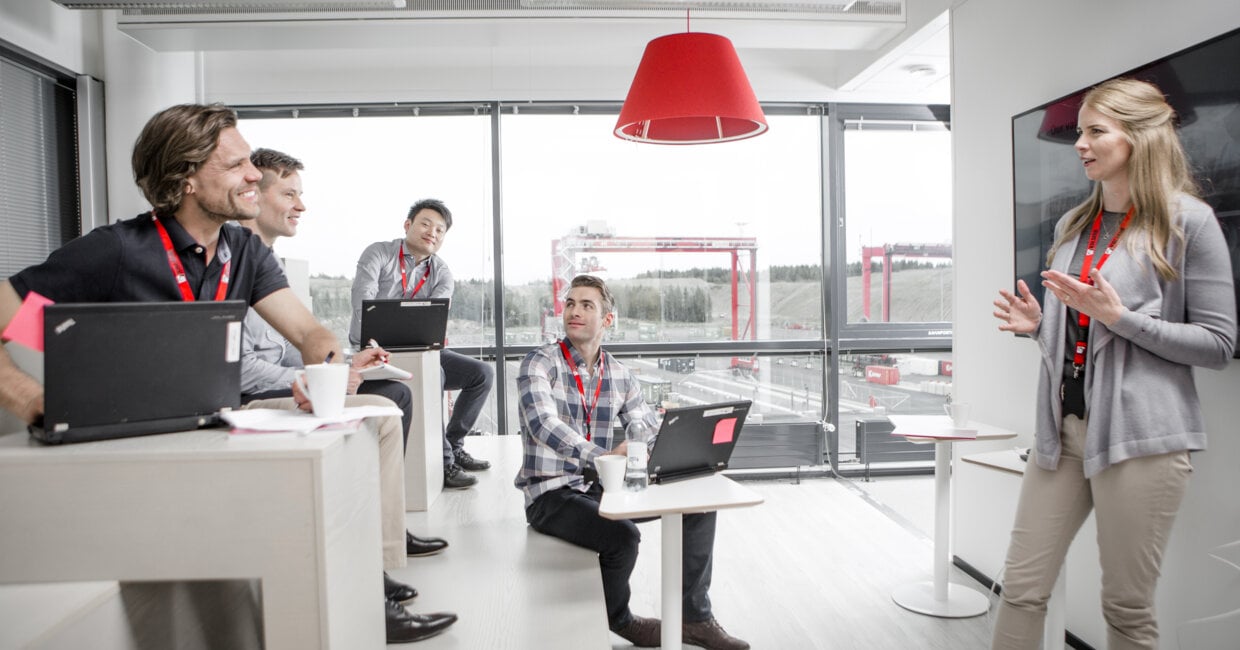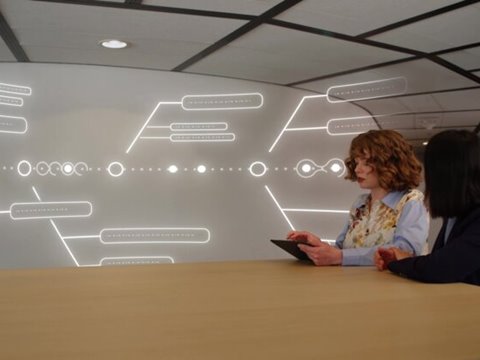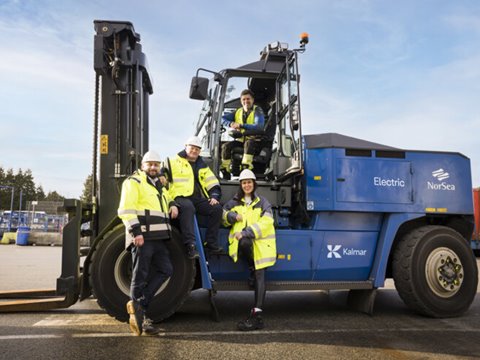
Anatomy of an innovation
Innovation is embedded in Kalmar's DNA. But how do we deliver innovations that not only fulfil customers' needs but exceed them, and at the same time help to make the world safer, cleaner and overall more sustainable?
Innovation. Few words pack more punch than innovation, a word that has the power to change the world.
At Kalmar, one cannot have a conversation without mentioning innovation.
Gina Lopez, Vice President, Terminal Tractors at Kalmar, agrees, "Innovation has been at the heart of our business since the 1930s when Kalmar was founded. Today, driving innovation is a Kalmar value that we live and breathe every day."
But, what do people mean when they talk about innovation at Kalmar?
"It means combining technologies together to create something completely new and unforeseen. This is our mission," explains Lopez.
"Driving innovation is a Kalmar value that we live and breathe every day."
At Kalmar, innovation doesn't only mean new products, services or solutions.
"Innovation is an innovation only when it results in commercial success and helps our customers to move their cargo in the most sustainable and efficient way possible," adds Lasse Eriksson, Vice President, Technology, Kalmar.
That is why Lopez says that customers' needs are always the first building block in the innovation process.
Create optimal conditions
Kalmar is committed to building a strong innovation culture within the company.
Eriksson remarks that every employee is involved, not just the R&D department. "It is crucial to create conditions that enable innovations: the tools, the right working environment and the right atmosphere."
Innovation processes should be light, unencumbered and informal.
"Bureaucracy suppresses initiative. We try to ensure that everyone has a chance to do some brainstorming as part of their daily work," explains Eriksson.
"Innovation requires a climate of trust."
Henrik Häggblom, Vice President, Intelligent Horizontal Transportation Solutions, at Kalmar adds that open working spaces encourage people to engage in informal chats, which in turn help to spark new ideas and create a sense of community and transparency.
"Innovation requires a climate of trust. Supervisors must encourage their team members to be curious, think outside the box, experiment and above all, make sure that that everybody knows it is OK to fail."
According to Häggblom, everyone on his team is free to be as creative as possible. There are no boundaries. "We don't compromise on safety and code of conduct issues. Other than that, employees have lot of freedom."
Häggblom is ready to give feedback when asked to do so, but avoids interfering. "The desire to do things better, create something new and to exceed expectations starts from within, it cannot be forced."
When teams operate according to these principles, the innovation engine really starts to hum.
Collaboration helps to bring out the best
No wonder there is no shortage of new ideas at Kalmar.
"Our biggest challenge is to pick the right ones," says Eriksson. “That is why customers and Kalmar sales and service teams are involved at an early stage of development to give feedback on the ideas.
"Customers and our own organisation from the customer interface can best express the needs and concerns and evaluate the feasibility of new ideas and concepts."
In addition, teams bring all other partners on board early in during the process.
"In order to harness the full potential of technology development, it is vital to have a strong strategic relationship not only with customers, but also with all technology owners," underlines Lopez.
"We listen to the subtle signals, connect the dots and figure out what is the common underlying need."
This is how, according to Eriksson, teams are able to determine whether the idea has commercial value and where Kalmar can make a difference and help customers.
"Naturally, it is not possible to solve each customer's problems one by one. Instead, we listen to the subtle signals, connect the dots and figure out what is the common underlying need," says Eriksson.
Winning solutions
According to Lopez, the common themes are clear.
"Customers want eco-efficient solutions, they seek new possibilities to reduce their carbon footprint and try to be more productive and efficient. And of course, everyone wants to improve safety."
Kalmar is answering these needs while at the same time ensuring that customer experience and performance is not compromised. One example is the new Kalmar electric terminal tractor, which was recently awarded first place in the PEMA (Port Equipment Manufacturers Association) Innovation Awards.
"It is a solution that will benefit our customers’ bottom line and improve their productivity, while at the same time, enhance their sustainability credentials,” states Lopez.
Don't be afraid of collision
While customer input is crucial, Eriksson remarks that it is also important to give space for in-house, "deep innovations". Kalmar employs some of the world's best professionals with decades of technological experience and know-how.
"Their ideas can lead to disruptive, highly innovative solutions that change the market. These innovations are often something that customers cannot even imagine, something that makes us forerunners in our industry."
One example of a breakthrough innovation is another PEMA award winner, the
Kalmar FastCharge™. It is the first fast charging solution for electric powered shuttle and straddle carriers. It saves time, fuel and costs and most importantly emits zero emissions into the atmosphere at the point of use.
"We are ahead of the competition and there is huge interest all over the world, but the process of electrification requires big changes in companies that do not happen overnight," says Häggblom.
Lopez underscores that one shouldn't be afraid of collision between the technology push and the market push.
"I believe that the market drives technological development. In other words, if there is a particular need in the market, the technology to meet that need will arise.”

Related articles
Further reading
Subscribe and receive updates in your email
Subscribe













